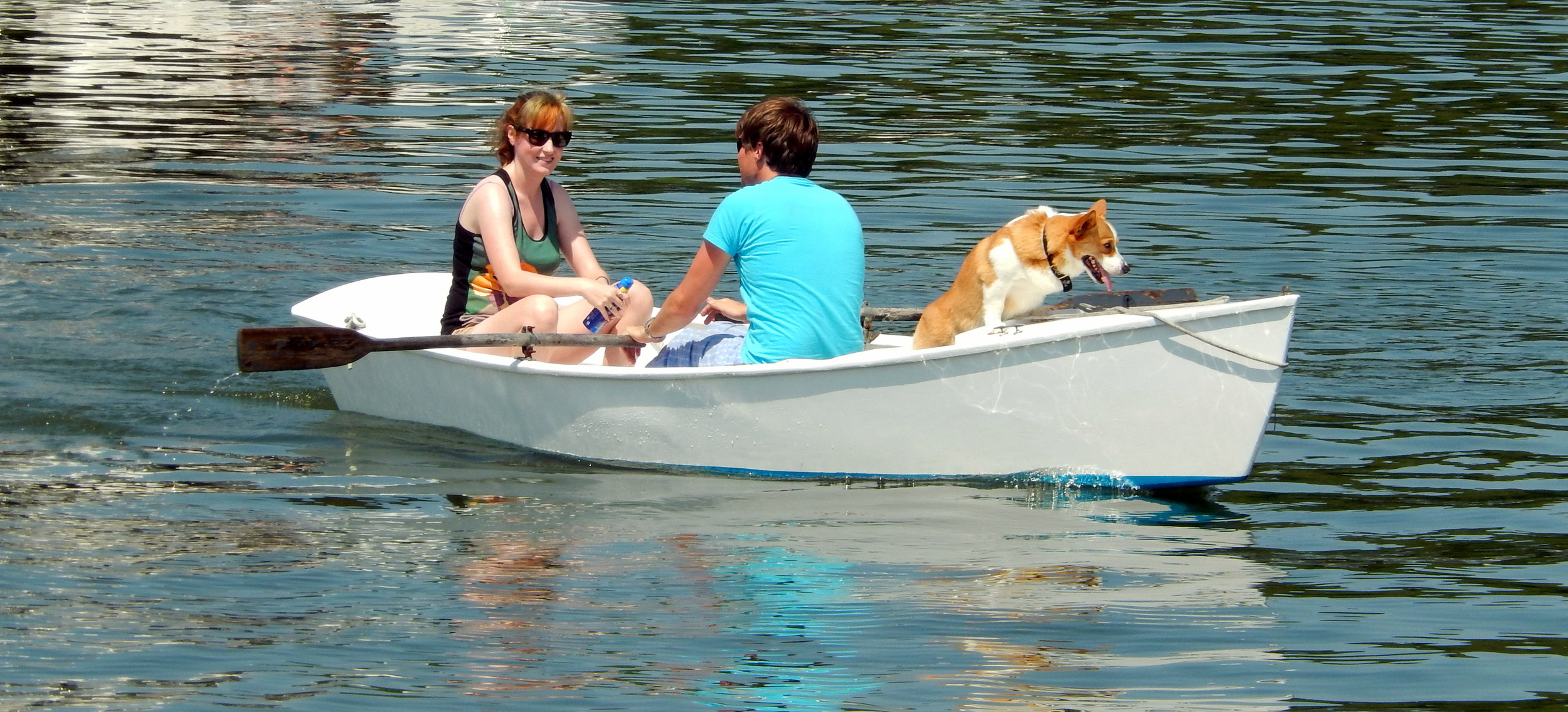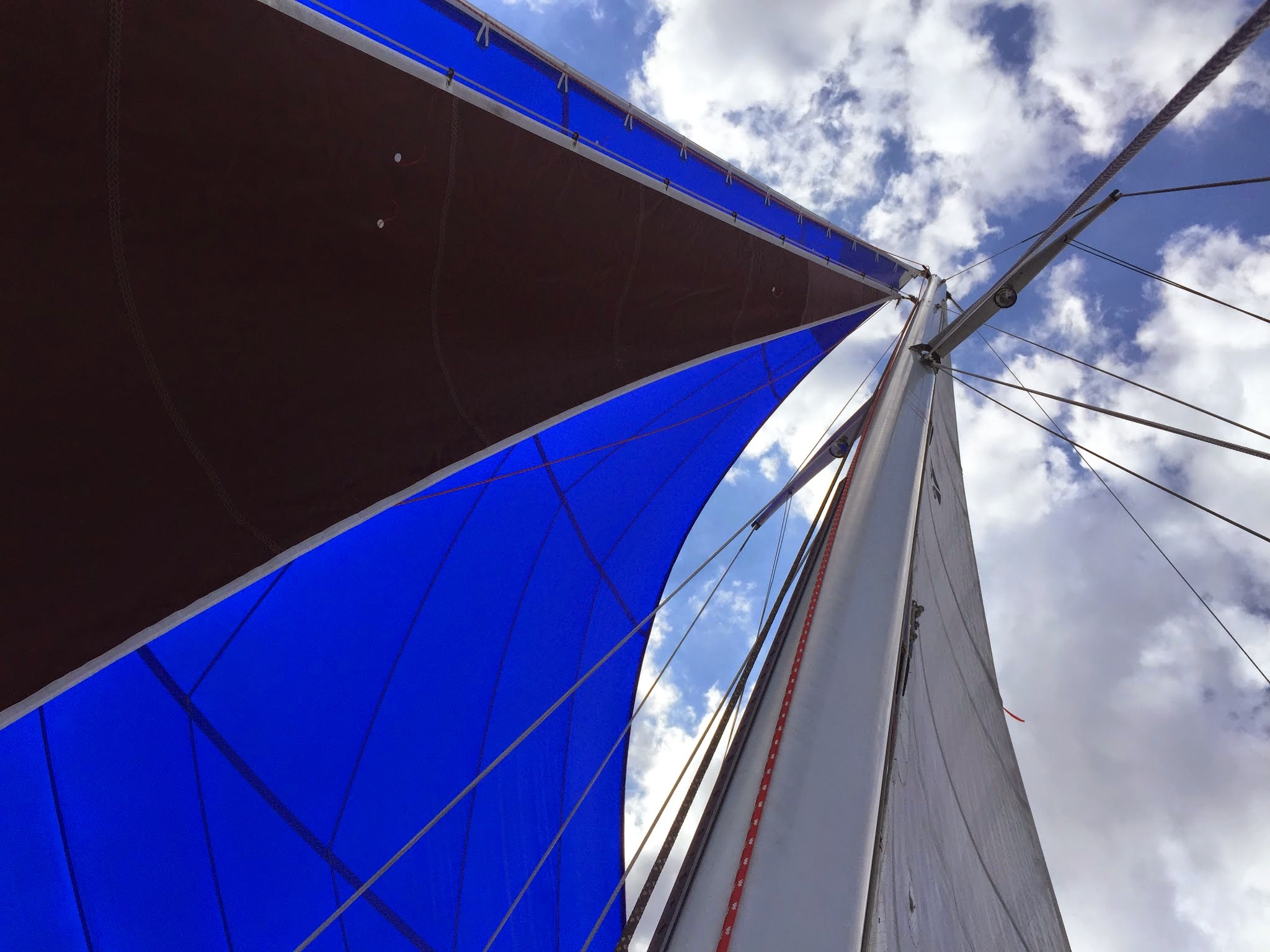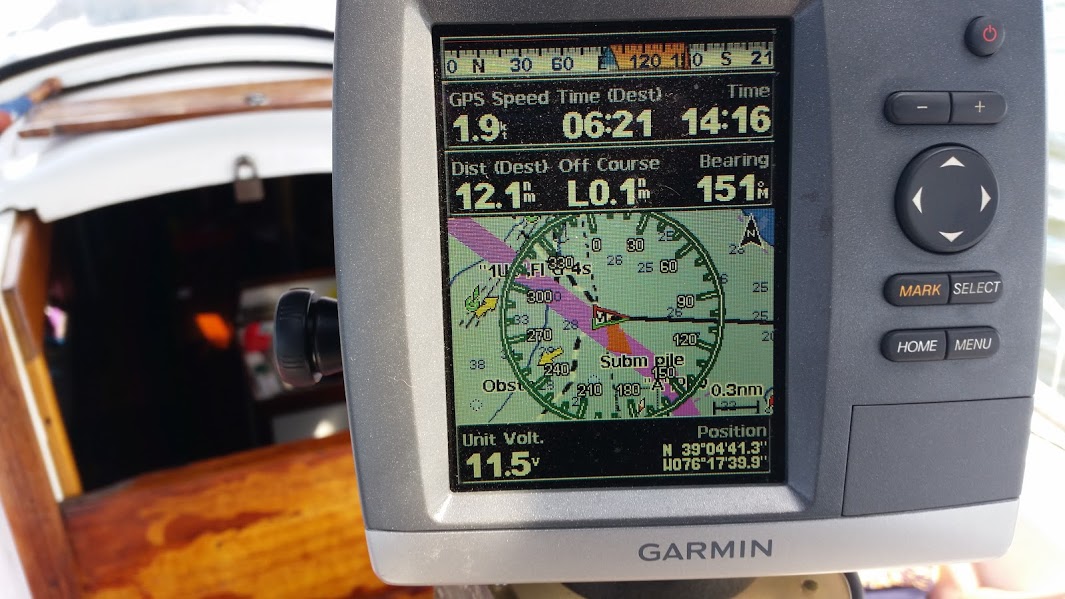Today we set sail for the Chester River to meet up with the Glenmar Sailing Association!
I joined Glenmar about two years ago when I was invited to join by Dave Farhmeier. It's a great organization that will keep you busy! They have races, fun cruises, cookouts, lectures, meetings, and so much more!
This cruise took us to Grey's Inn Creek, up the Chester River. This was a fun and relaxing cruise for us as we had just gotten back from our month long cruise South. We set sail Saturday morning and the winds were wonderful! Run out of the Inner Harbor, Broad Reach down the Patapsco River, Beam Reach all the way across the bay.
When we entered the Chester River, the winds died down significantly, but the current was drawing us into the river at around 0.5kn. Not tremendously fast, but still moving in the right direction!
As we rounded the southern channel marker, we made our turn to head North up the river towards our meeting point. This is when the winds picked up from the East and we were able to sail all the way up the Chester River on a beam reach. It's not everyday that the winds are always blowing in the perfect direction!
The Chester River is gorgeous! Calm waters leading to tree lined shores and sailboats everywhere! We entered the creek on a broad reach and sailed straight down between the tree lined shores towards our destination hidden in the Chesapeake Bay; it was so peaceful.
We rafted up with Dave Farhmeier (Down Home) and Tom Ritter (Twelfth Night) who made much better time than we did and then headed over to the party boats to hang out with new friends. Everyone brought drinks and hors d'ouevres, so everyone got to eat and meet all the other members.
As the night drew on, we grew tired and retreated back to our boats for a very calm night in some of the most protected waters I've been in.
Sunday was a very relaxing day for us. We ate wonderful meals, did some work on the boats, and swam. I tuned my rigging before breakfast while the women did yoga in the morning on the aft deck of Twelfth Night. The tuning proceeded quickly, only taking about 20 min to do all the shrouds.
After that, I went up the mast of Twelfth Night to do an inspection of his rigging. While up there, I was able to capture a birds eye view of the whole flotilla.
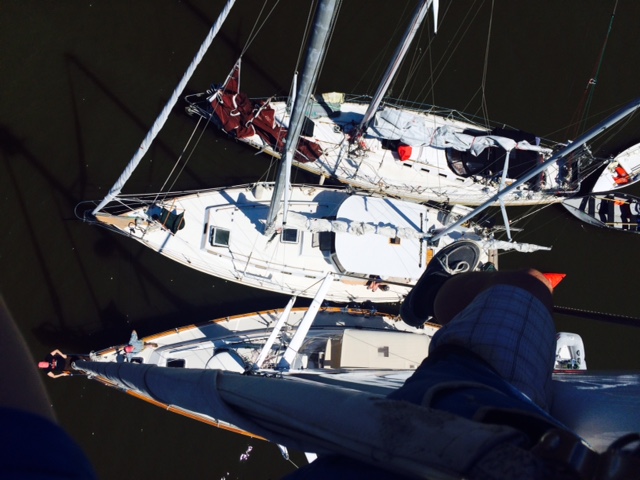
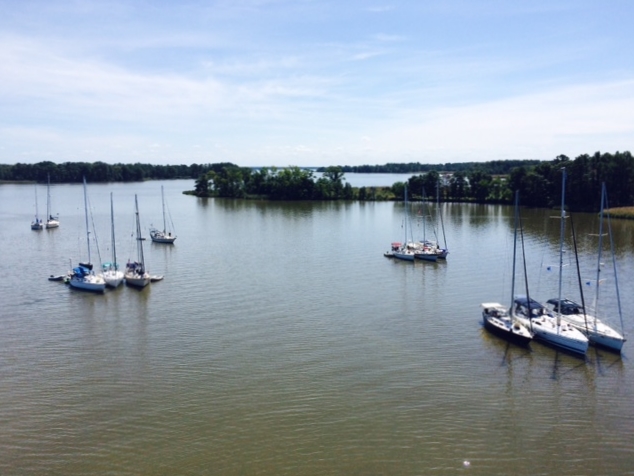
When things heated up, we all went for a swim in the pleasantly warm waters of the creek. Dave and I took this opportunity to scrape off any soft growth from our boats. This then transformed into another relaxing afternoon on the water followed by a night of card games.
Monday Morning we set sail at sunrise to ride the tide out of the creek and river. There was a gentle whisper of wind that was able to push us along at around 2 knots with all the sails up.
Along the way, the other members of Glenmar passed by and I was able to get pictures of their boats.
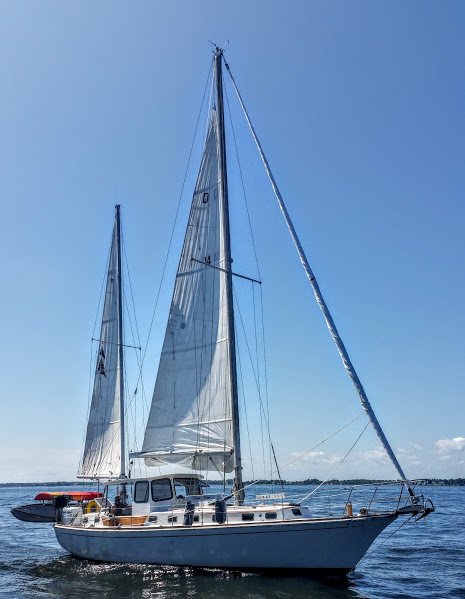

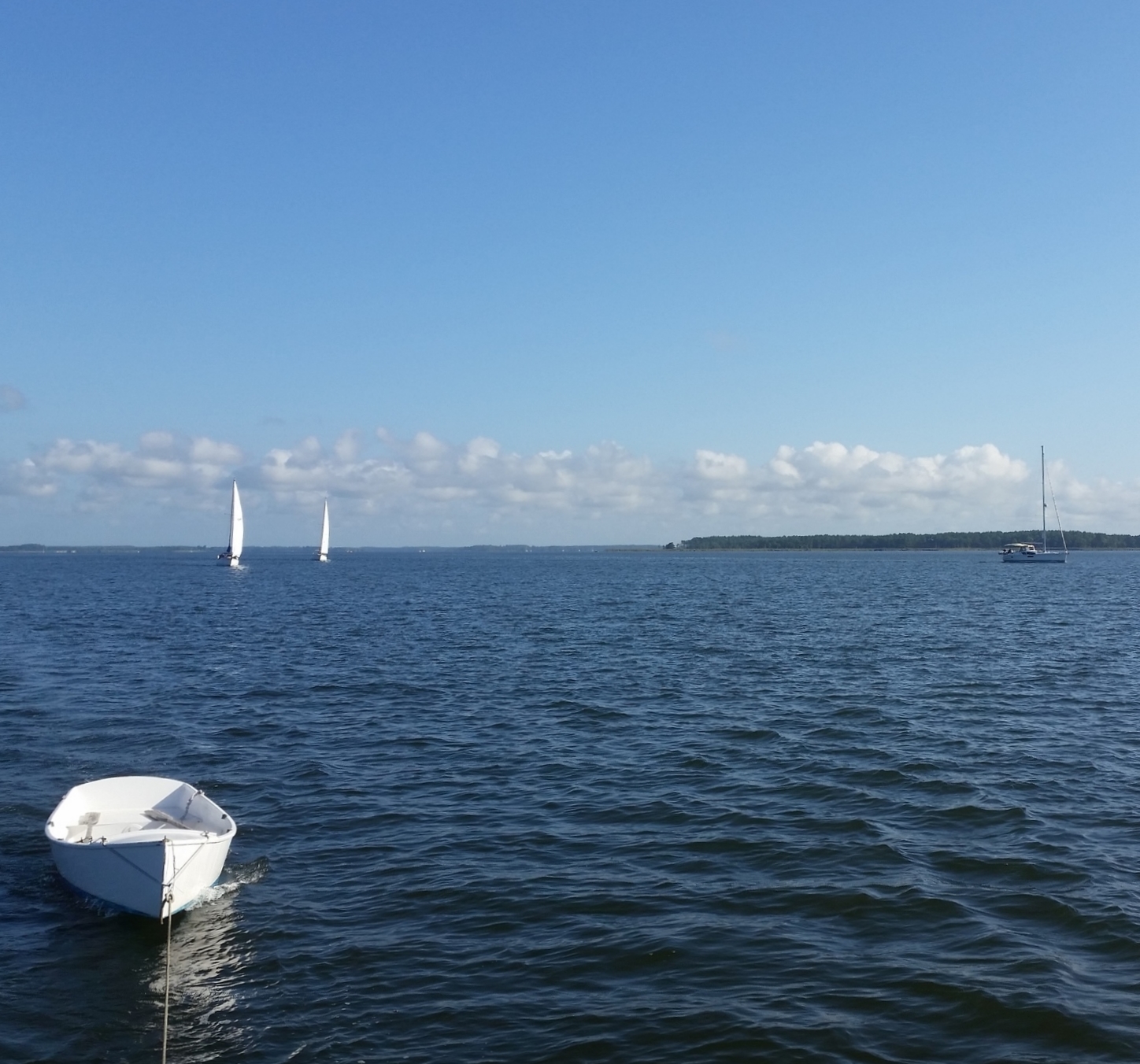

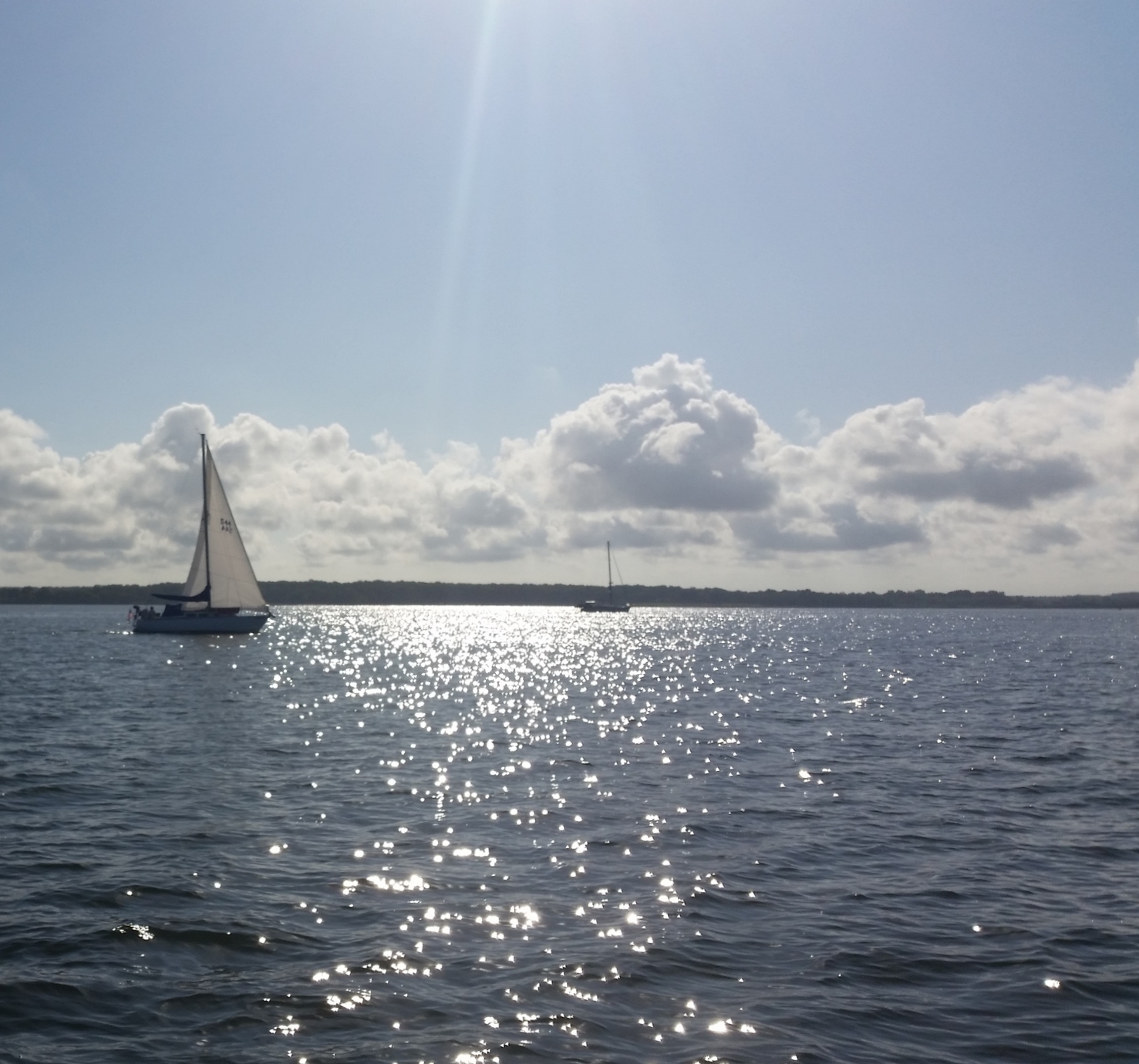
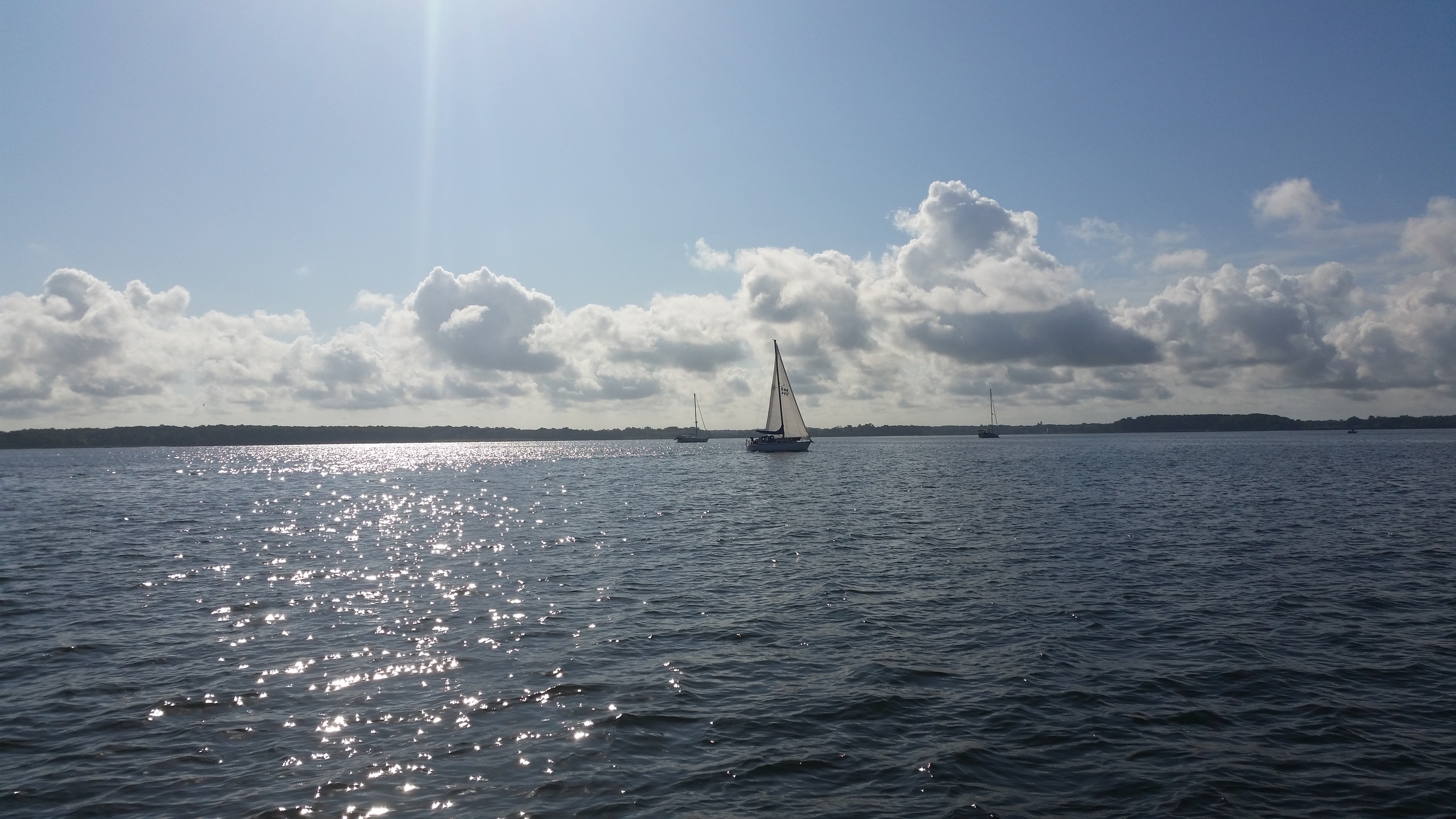
Once in the bay, the winds died completely and we drifted along with the tide as it flooded the bay. Thankfully we were out of the river by this point or else we would have been pushed back into the Chester River.
In the afternoon the winds returned and we were able to sail along between 4 to 5 knots as we made our way back to Baltimore. We arrived in our slip that night just after sunset, after a relaxing sail from a quiet creek filled with good friends and fellow sailors.
















